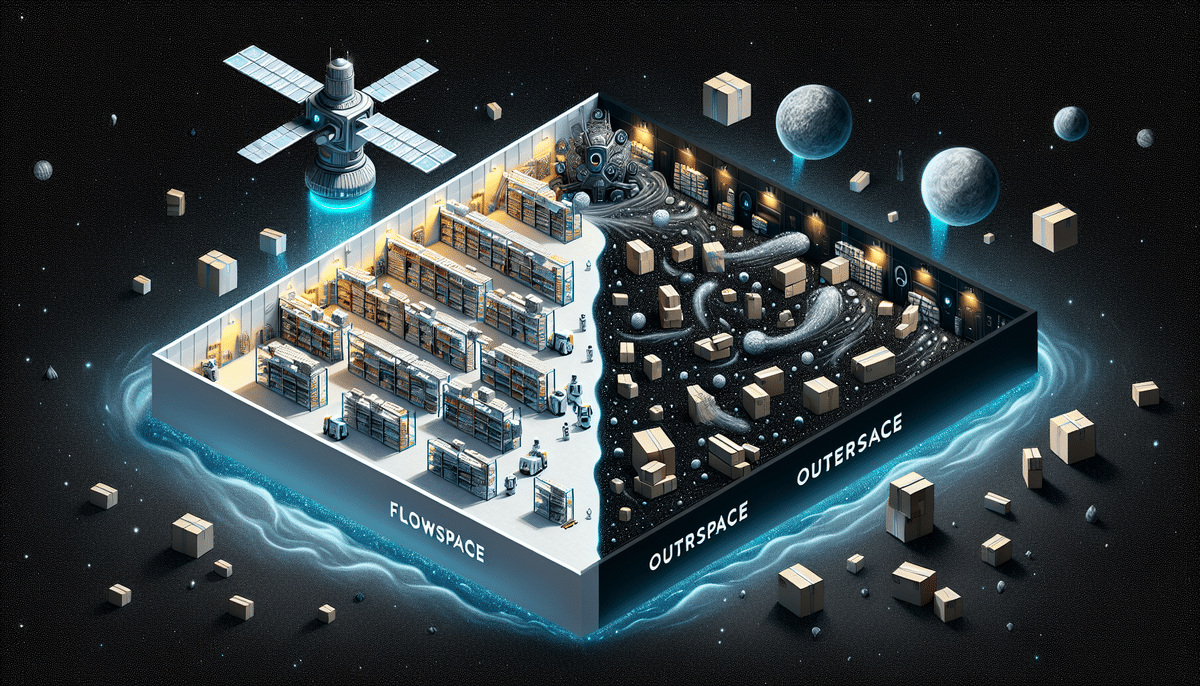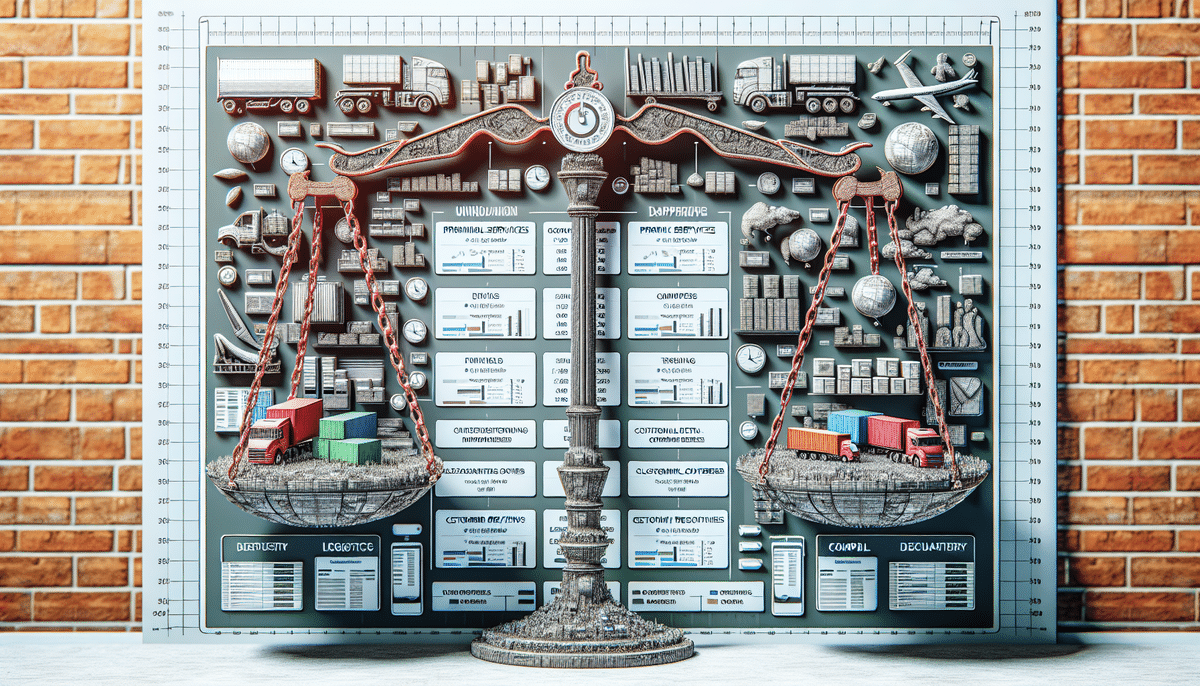Flowspace vs Outerspace: A Comprehensive Comparison
When it comes to storage and logistics, businesses have traditionally turned to outerspace as a solution. After all, the vast expanse of the universe seems like the perfect place to store excess inventory and handle logistics. However, the limitations and drawbacks of this approach are becoming increasingly apparent. That's where flowspace comes in – a modern storage solution that offers several key advantages over outerspace. In this article, we'll explore those advantages in detail and help you understand why flowspace is quickly becoming the preferred choice for businesses looking to streamline their supply chain management.
Advantages of Flowspace Over Outerspace
Accessibility
One of the most significant advantages of flowspace is its accessibility. With flowspace, businesses can store their inventory in secure, dedicated facilities that are easily accessible at all times. This eliminates the need to navigate through the vast expanses of space to retrieve products, a process that can be both time-consuming and costly.
Cost Savings
Flowspace offers substantial cost savings compared to outerspace storage. While outerspace storage requires significant investment in specialized technology and equipment, flowspace leverages basic infrastructure that can be easily scaled according to business needs. According to a [2023 logistics report](https://www.mckinsey.com/business-functions/operations/our-insights/operations-insights-logistics-and-supply-chain-management), companies using scalable storage solutions can reduce their logistics costs by up to 30%.
Environmental Impact
Flowspace also provides opportunities to reduce a business’s carbon footprint. By centralizing inventory storage, businesses can minimize the need for multiple warehouses and extensive transportation, leading to lower emissions and energy consumption. This aligns with the growing emphasis on sustainability in the business sector.
Limitations of Outerspace for Storage and Logistics
Practicality and Reliability
Despite its initial appeal, outerspace storage presents numerous practical challenges. The distance and time required to access inventory stored in space are impractical for businesses needing quick retrievals. Additionally, the cost of launching and maintaining items in space is prohibitively high, making it unrealistic for most organizations.
Technical and Logistical Challenges
Storing inventory in outerspace requires specialized equipment and technology, along with a high level of expertise. The unpredictable nature of space weather and other environmental factors can pose significant risks to stored inventory, making it a less reliable option for businesses that depend on timely deliveries.
Accessibility Issues
Unlike traditional warehouses, which are easily accessible via ground transportation, accessing stored items in outerspace necessitates complex and expensive equipment. This complexity can hinder a business's ability to respond swiftly to customer demands and maintain competitive advantage.
Environmental Sustainability
Launching items into space consumes substantial energy and resources, contributing to climate change and other environmental issues. As businesses increasingly prioritize sustainability, outerspace storage becomes an even less attractive option.
Cost and Environmental Benefits of Flowspace
Cost Efficiency
Flowspace is a more cost-effective solution compared to outerspace storage. It requires only basic infrastructure and offers the flexibility to scale operations as needed, allowing businesses to manage their inventory more efficiently without incurring excessive costs.
Real-Time Inventory Management
Flowspace provides real-time inventory tracking, enabling businesses to monitor inventory levels, track shipments, and manage orders from a centralized platform. This reduces errors and saves time, leading to more informed decision-making.
Environmental Sustainability
Flowspace significantly reduces the carbon footprint associated with traditional storage solutions. By centralizing inventory and optimizing logistics, businesses can lower their energy consumption and emissions, contributing to their sustainability goals.
How Flowspace Streamlines Supply Chain Management
Efficient Inventory Management
Flowspace enhances supply chain efficiency by offering dedicated storage that can be easily scaled. This flexibility allows businesses to handle Just-In-Time (JIT) deliveries and adapt to fluctuating market demands swiftly.
Advanced Analytics and Reporting
With flowspace, businesses gain access to advanced analytics and reporting tools. These tools track key metrics such as inventory turnover, order fulfillment rates, and shipping times, helping businesses identify areas for improvement and optimize their supply chain processes.
Data-Driven Decision Making
The data provided by flowspace’s analytics tools facilitates informed decision-making, leading to increased operational efficiency, reduced costs, and higher customer satisfaction.
Future Trends in Storage Solutions
Technological Advancements
The future of storage solutions lies in technological innovation. Flowspace leverages advanced inventory management systems and automated processes to enhance efficiency and reduce costs, positioning it ahead of traditional outerspace storage options.
Sustainability Initiatives
As environmental concerns grow, businesses will increasingly adopt sustainable storage solutions like flowspace that minimize carbon footprints and promote resource efficiency.
Scalability and Flexibility
Future storage solutions will prioritize scalability and flexibility, allowing businesses to adjust their storage needs dynamically in response to market changes. Flowspace’s scalable infrastructure meets this demand effectively.
Making the Right Choice: Flowspace vs Outerspace
Key Considerations
- Storage Needs: Assess the volume and type of inventory to determine the most suitable storage solution.
- Budget: Consider the cost implications of each option, including initial investment and ongoing expenses.
- Sustainability Goals: Evaluate how each storage solution aligns with your business’s environmental objectives.
- Accessibility: Ensure that the storage solution allows for quick and easy access to inventory.
Final Decision
Choosing between flowspace and outerspace storage depends on your business’s specific requirements. However, given the practical, cost, and environmental advantages, flowspace emerges as the superior choice for most businesses seeking efficient and sustainable supply chain management.
Conclusion
Flowspace offers a modern, efficient, and sustainable solution for businesses looking to optimize their storage and logistics operations. With its numerous advantages over outerspace storage, including cost savings, improved accessibility, and reduced environmental impact, flowspace stands out as the preferred choice for forward-thinking businesses. By leveraging advanced technology and flexible infrastructure, flowspace helps businesses streamline their supply chains, adapt to market changes, and achieve long-term success.




















